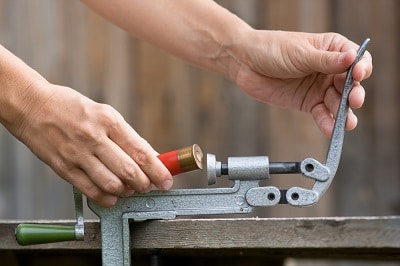Handloading ammunition is a very common practice for intense shooters. Handloading allows you to save money while also customizing your ammunition to your exact kind of shooting. But are you making these common reloading mistakes?
There are several mistakes that come along with handloading your ammunition. Some of these mistakes can be very dangerous, despite the fact that they are usually easily avoidable.
Common Reloading Mistakes and How to Avoid Them
Look below to see some of the most common reloading mistakes, and get our recommendations for how to avoid it.
1. Powder Charge Errors
The first common mistake is loading the wrong powder or too much powder into the cartridge. This is first on our list due to how dangerous it can be.
If the wrong powder is loaded, or if one case is accidentally loaded with extra powder, there is a potential for serious damage and injury to occur.
To avoid this mistake, visually inspect each cartridge to make sure it has the same amount of powder as the rest. Another tip, if you are loading multiple types of cartridges, make sure to keep the powders separate and labeled correctly.
2. Bad Casing
The next common mistake is using a bad casing. Whether the casing is cracked, dented, or the incorrect size, using a bad casing is a bad idea.
If there is a crack in the casing, gases will be able to escape the cartridge, and could potentially harm the shooter. In the worst case scenario, the cartridge could actually split open completely and damage your weapon, if not worse.
To avoid this mistake, thoroughly inspect each casing before using them to handload ammunition.
3. Primer Seating
When seating the primer in the cartridge, there are two things that can go wrong.
If the primer isn’t seated deep enough, it will stick off the back end of the cartridge. Primers can be very sensitive, so if it sticks out too far, you risk the unlikely situation of a cartridge being ignited early. However, if the primer sticks out too far, it could also affect the cycling of the weapon.
If the primer is seated too deep, it could become even more sensitive, because some of it will be crushed as it is forced too deep into the casing. It also could cause issues with firing and cycling the weapon.
To avoid this mistake, inspect the cartridge after you put the primer in. It should sit below the surface of the back of the casing, but it shouldn’t be in too deep.
4. Projectile Seating
When you put the bullet in the cartridge, it is possible to either put it in too far or not far enough. If the projectile isn’t seated correctly, it could damage the action or the barrel of the weapon.
To avoid this, make sure you are guiding the projectile into place precisely and double checking after it is crimped.
5. Crimping Mistakes
Speaking of crimping, the last common mistake on our list is either crimping the casing too much or not enough.
If the case is crimped too much, it can cause issues cycling the weapon. It creates a bulge in the cartridge, which can cause it to hang up when trying to enter the chamber.
If the case isn’t crimped enough, the projectile could actually come out of the casing a little bit, which would also cause issues with loading and cycling the weapon.
To avoid this, make sure you develop a process for crimping and inspecting the ammunition after you have crimped it.
